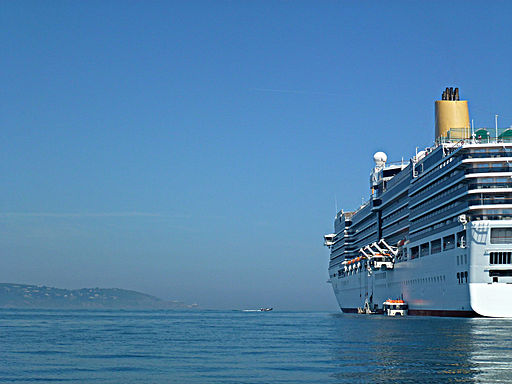One of the perks of being an art appraiser in Vancouver is getting access to some of the most expensive homes in the country; but if there is one thing I have learned as an appraiser, it is that money and good taste do not go hand in hand. I’ve lost count of the number of visits I’ve had where the address is impressive and the curb appeal is exquisite, only to walk through the door to find all of the walls have been adorned with overinflated and/or fake art purchased on a cruise ship. Why do people do this?! Pirates, that’s why!
If you are a Type A CEO who doesn’t want to read the rest of this article, just take this bit of advice- DON’T BY ART ON CRUISE SHIPS OR FROM ANY MOBILE AUCTION HOUSE!
So how do these pirates get away with it? I was on a cruise this year, so I decided to get a closer look at how the scam unfolds. On a “sea-day” around the time that you are getting too burnt to be out in the sun any longer, the auctioneer will lure you into the room with a glass of champagne. His pitch: the upper-crust has made money investing in art, and if you buy this so can you! After a whole 20-30 minutes (if you’re lucky) of looking at the art, the auction begins.
The first couple of lots offered are usually by some obscure artists, they are touted as the next Picasso, and are hammered down for a usually a few thousand dollars. While these pieces might not be forgeries, the cruise ship is asking for far more than you could buy them for at any public auction and they certainly never go up in value at the rate claimed by the cruise auctioneer (if at all). The real offensive sales are the prints they are actually claiming are done by great masters such as Joan Miro, Marc Chagall, Pablo Picasso, Rembrandt van Rijn, and Salvador Dali. People get wrapped up in the big recognizable artist names; the auctioneer on our cruise was romancing how you could invite your neighbour over to take a look at your new Rembrandt! We can tell they are forgeries because there are records of the authentic works that these artists did, and when the details don’t match up perfectly they are fake. Print forgeries by these artists are so rampant in the market place that the authentic works are becoming more and more difficult to sell. The cruise ship auctions will sell a “Dali” for several thousands of dollars, which they will tell you, “is a steal compared to their appraised value”, but a quick search online would show that you can buy the same forgery for around $150 on eBay. Because many people don’t have the time (or access) to do due diligence on board a ship, they end up realizing the hard truth on terra firma when it is too late (the fine print will tell you that “all sales are final”). One of the reasons these cruise ship auctions are getting away with high sea robbery is because they are hosting their sales in international waters where there are few consumer protection laws.
On the cruise, I actually didn’t stay for the whole auction because I couldn’t sit there quietly any longer, and I knew that if I said something there was a good chance I could find myself overboard in the middle of the night. But because the worst part of my job as an art appraiser is being the bearer of the message that the art they purchased is worth a small fraction of what they paid, I wanted to yell STOP! There are ways that you can invest in art that will appreciate in value, but like any investment you have to do a lot of homework to be able to spot those opportunities (for homework help check out these helpful questions). Or if you don’t want to do all the homework yourself, find a reliable art specialist to help. Vancouver has the highest per capita concentration of artists in Canada, so don’t risk your money at sea- do your research and buy local.
Kate Bellringer is an Art Appraiser and the Director of Contemporary & Canadian Art Auctions at Maynards Fine Art & Antiques. Visit: http://www.maynardsfineart.com/






















